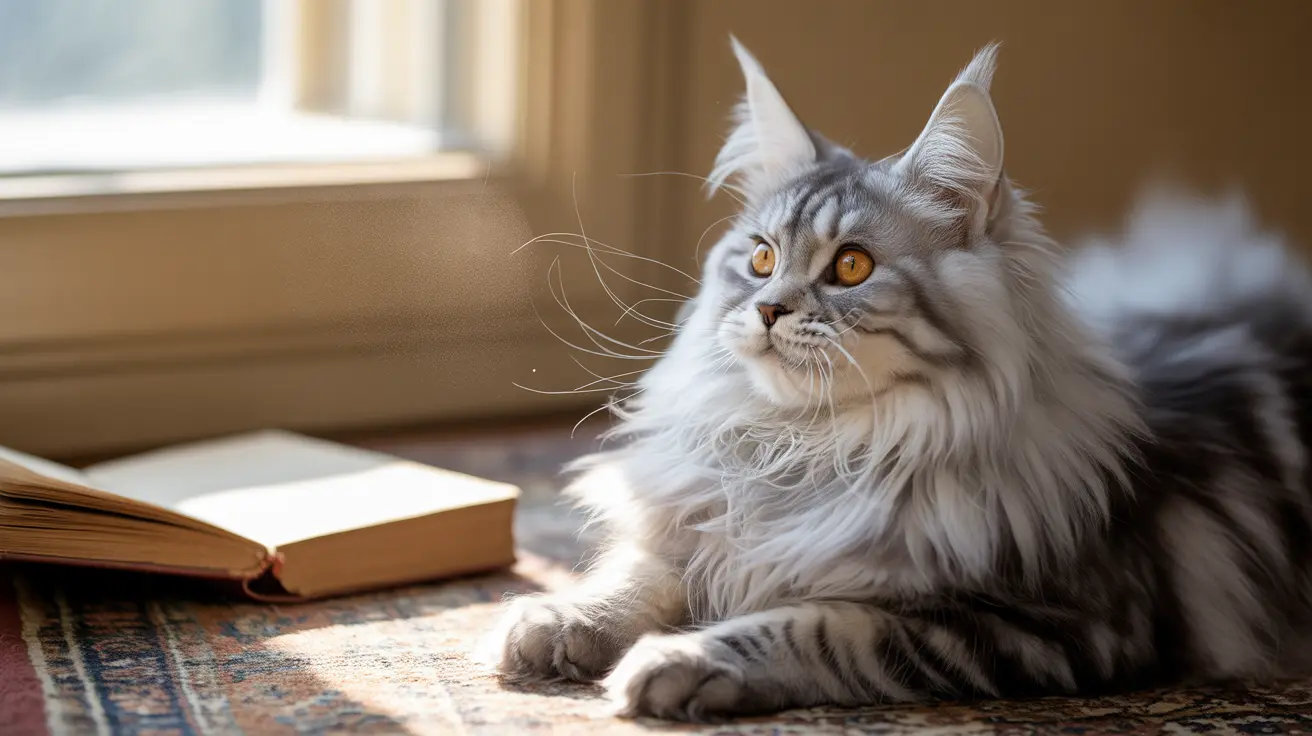If you've ever wondered about those distinctive whiskers positioned above your cat's eyes, you're not alone. These specialized sensory tools, known as superciliary whiskers, play crucial roles in your cat's daily life and survival. Understanding these unique features can help you better appreciate your feline friend's remarkable abilities.
These specialized whiskers are more than just decorative facial features - they're sophisticated sensory organs that help cats navigate their environment, protect their eyes, and even communicate their emotions. Let's explore the fascinating world of cat eyebrow whiskers and discover why they're so important for our feline companions.
The Anatomy of Cat Eyebrow Whiskers
Superciliary whiskers are distinctly different from regular cat fur. These specialized hairs are thicker, longer, and more deeply rooted in the skin. Each whisker is connected to highly sensitive nerves and blood vessels, making them extremely responsive to even the slightest touch or air movement.
Most cats have approximately three superciliary whiskers above each eye, though this number can vary between breeds. These whiskers are embedded in specialized follicles that contain proprioceptors - sensory organs that help cats understand their body position and orientation in space.
Essential Functions of Feline Eyebrow Whiskers
Navigation and Spatial Awareness
Eyebrow whiskers serve as environmental sensors, helping cats detect nearby objects and judge distances. They're particularly useful when cats navigate in low-light conditions or squeeze through tight spaces. These whiskers can determine whether an opening is wide enough for the cat to pass through safely.
Eye Protection Mechanism
One of the most important functions of superciliary whiskers is protecting the cat's eyes. When these sensitive whiskers detect approaching objects or debris, they trigger an immediate protective blink reflex. This quick response helps prevent eye injuries and keeps foreign particles away from the delicate eye surface.
Communication and Emotional Expression
Cats use their eyebrow whiskers as part of their non-verbal communication system. The position of these whiskers can indicate various emotional states:
- Forward-pointing whiskers often signal curiosity or interest
- Flattened whiskers might indicate fear or aggression
- Relaxed whiskers typically suggest contentment or calm
Breed Variations and Care
Different cat breeds can display varying characteristics in their superciliary whiskers. Maine Coons and Norwegian Forest Cats typically have prominent eyebrow whiskers, while breeds like the Sphynx might have fewer or none at all. Regardless of breed, it's crucial never to trim or remove these whiskers, as doing so can disorient your cat and affect their ability to navigate safely.
Frequently Asked Questions
Why do cats have whiskers above their eyes and what are superciliary whiskers?
Cats have whiskers above their eyes, called superciliary whiskers, to serve as specialized sensory organs. These whiskers help cats detect nearby objects, navigate their environment, and protect their eyes from potential harm.
How do eyebrow whiskers help protect a cat's eyes and improve their navigation?
Eyebrow whiskers trigger a protective blink reflex when they detect approaching objects or debris. They also help cats judge distances and spatial relationships, especially in low-light conditions or when moving through tight spaces.
Can trimming or damaging a cat's eyebrow whiskers affect its balance and behavior?
Yes, trimming or damaging eyebrow whiskers can significantly impact a cat's ability to navigate safely and confidently. Cats may become disoriented and hesitant when moving through their environment if these important sensory tools are compromised.
How do cats use their superciliary whiskers to communicate emotions or mood?
Cats express their emotional state through whisker positioning. Forward-pointing whiskers often indicate curiosity, while flattened whiskers might signal fear or aggression. Relaxed whiskers typically suggest a content, calm state.
Are there breed differences in the number or size of whiskers above a cat's eyes?
Yes, different cat breeds can have varying numbers and sizes of superciliary whiskers. Large breeds like Maine Coons typically have more prominent eyebrow whiskers, while some breeds, such as the Sphynx, may have fewer or none.
Understanding the importance of your cat's eyebrow whiskers helps you better appreciate these remarkable sensory tools and ensure you're providing proper care for your feline friend. Remember to never trim or interfere with these whiskers, as they're essential for your cat's well-being and daily functioning.






